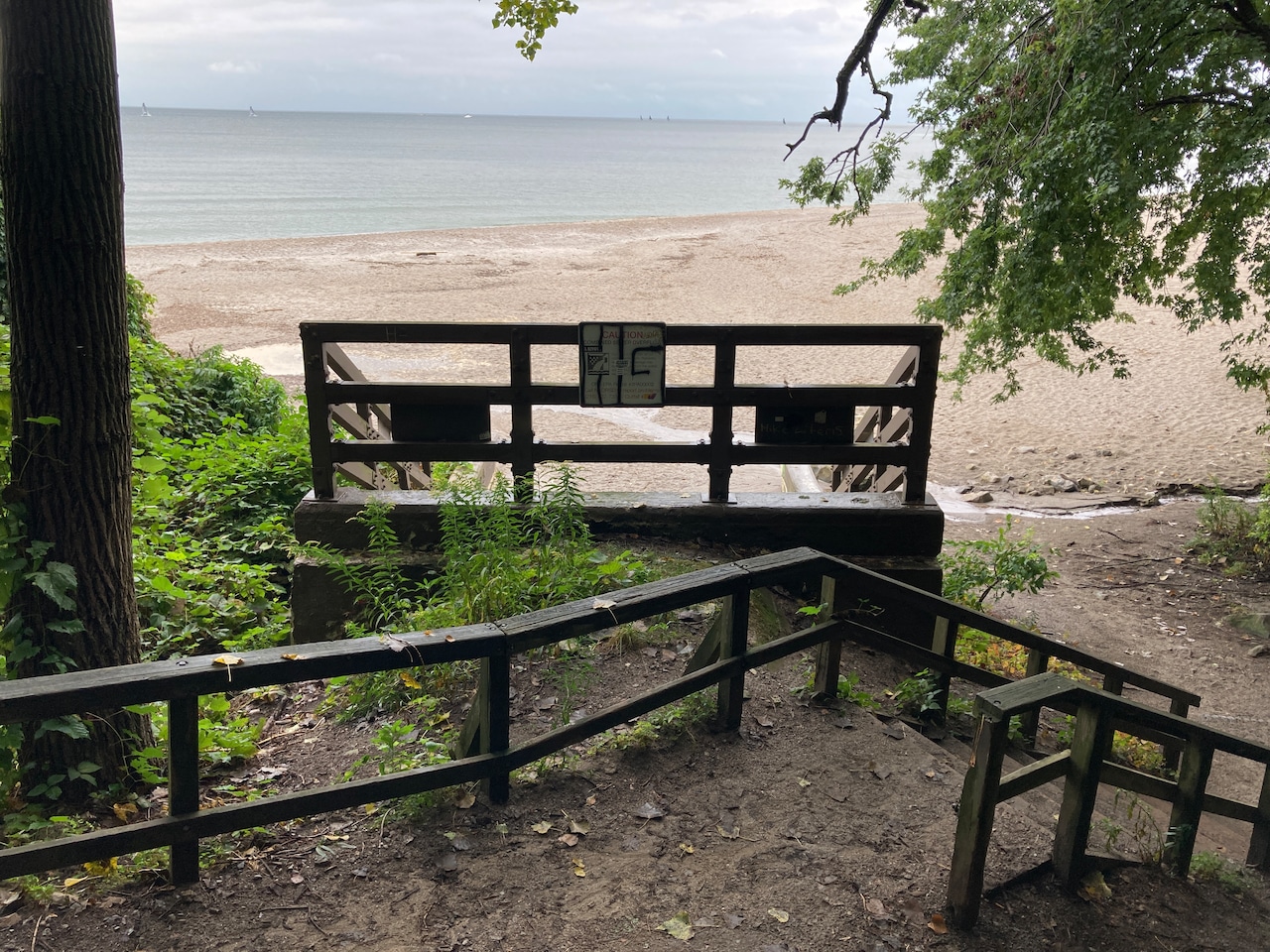
CLEVELAND, Ohio – When the Northeast Ohio Regional Sewer District embarked on its $3 billion Project Clean Lake in 2011 to greatly reduce sewage overflows, the outfall at Edgewater Beach was not part of the equation.
The relief point – one of 126 in the combined-sewer system – had experienced 40 to 50 overflows a year in the 1970s, only to dwindle to a handful in recent years, satisfying the U.S. Environmental Protection Agency.
An overflow from a combined sewer consists of both stormwater and raw sewage, which share the same pipe on their way to the treatment plant.
But now that the sewer district is more than halfway into Project Clean Lake, it’s circling back voluntarily to eliminate the Edgewater outfall altogether.
Whereas prior attempts to eliminate the outfall have not panned out, engineers at the sewer district now believe they have come up with a solution that will do the trick.
It comes with a preliminary price tag of $20 million, but also begs the question, why couldn’t this have been done long ago?
History
The answer lies in the complexities of the sewer system and what was mandated by the U.S. EPA in its consent decree with the sewer district, a deal dubbed Project Clean Lake.
While the agreement is expected to eliminate 99% of the district’s combined-sewage overflows by 2035, the consent decree specifically calls for the number of overflows at each outfall to be limited to about two to four per year, a standard the Edgewater outfall already meets.
So far, Project Clean Lake has managed to eliminate 14 outfalls. Of the 112 that remain, 75% now meet the EPA standard. That’s due to the construction of four massive storage tunnels that manage flow during heavy storms.
The remainder of the outfalls should meet the standard when three more of the giant storage tunnels called for in Project Clean Lake are completed.
The Edgewater outfall is the most visible relief point within the sewer district’s service area, and because it’s at a public beach that is part of Cleveland Metroparks, it’s the only one where authorities are compelled to extend health advisories after a major storm.
“It’s a reputational thing. And it makes us look bad,” said Jenn Elting, spokeswoman for the sewer district. “It makes Metroparks look bad.”
Working with consulting engineers, the sewer district took advantage of recent advancements in flow monitoring and computer modeling to test whether the addition of a 1,400-foot-length tunnel to the existing system would make a difference at the Edgewater outfall, said Doug Lopata, the sewer district’s program manager for combined-sewer overflows.
Over the past year, engineers mixed and matched variables, such as the proposed tunnel’s diameter, depth and slope, as well as its connection point to the system, to find the optimal combination. They ran dozens and dozens of simulations.
“It just took that many runs to hit the sweet spot,” Lopata said.
What they found is that a new tunnel should be able to redirect some of the surging flow by sending it further down a pipe that eventually connects to the Westerly Wastewater Treatment Plant, which is located more than one half-mile east of the beach.
In doing so, the level of sewage in what’s called the Northwest Interceptor would remain below the threshold that would trigger a gate and send it cascading toward the beach.
More to the solution
The added tunnel should also provide more time for gates at the Westerly plant to open and relieve pressure to the overall system.
“It’s like unclogging your bathtub drain,” Lopata said.
New equipment has been installed at Westerly to increase the capacity to accommodate wet-weather flows and to provide better treatment – including the destruction of E. coli bacteria – of those flows before they are discharged into Lake Erie.
With both the new tunnel and the plant improvements, Lopata is comfortable saying the Edgewater outfall will eventually not be needed. When that time comes, the raw sewage that would otherwise flow to the beach will instead go to the Westerly plant. Westerly will still have occasional overflows into Lake Erie, just not as many, thanks to its newly expanded capacity.
“But it is safer there than going out to the beach,” Lopata said.
Other outfalls
So, if the Edgewater outfall can be eliminated, how about others? Not necessarily, according to officials. Every outfall “is its own little science project,” Lopata said.
Removing an outfall is not always possible because it may be needed during heavy rain to prevent sewage from backing up in basements or elsewhere in the system.
Lopata said the sewer district has identified about 10 or 12 outfalls that may be able to be eliminated, “but we don’t want to overdo it, or do it whimsically” because it could lead to unintended consequences.
Positive response
One person who appreciates the sewer district plans is Julius Ciaccia, a former chief executive of the sewer district who later served on its board until 2020.
He remembers pushing to have the outfall at Edgewater Beach taken out of commission but always being told by engineers that it couldn’t be done. A previous plan to extend the tunnel out into the lake would have been more expensive and still would not have solved the problem of E. coli in the water.
Now that a solution appears possible, he’s glad the eyesore may soon be gone.
“It was a big deal and I‘m not surprised it took them years to figure out,” Ciaccia said. “It’s very complicated.”
Also pleased with the recent developments is Cleveland Metroparks, which will have to coordinate with the sewer district when it comes to building the tunnel, something that will temporarily disrupt activity at a section of Edgewater Park.
“Edgewater Park attracts nearly two million recreational visitors each year, including for swimming,” Metroparks said in a statement. “Once in place, this solution will help improve water quality and recreational opportunities at the beach, especially following heavy rainfalls. We will be working with them closely as their project develops.”



